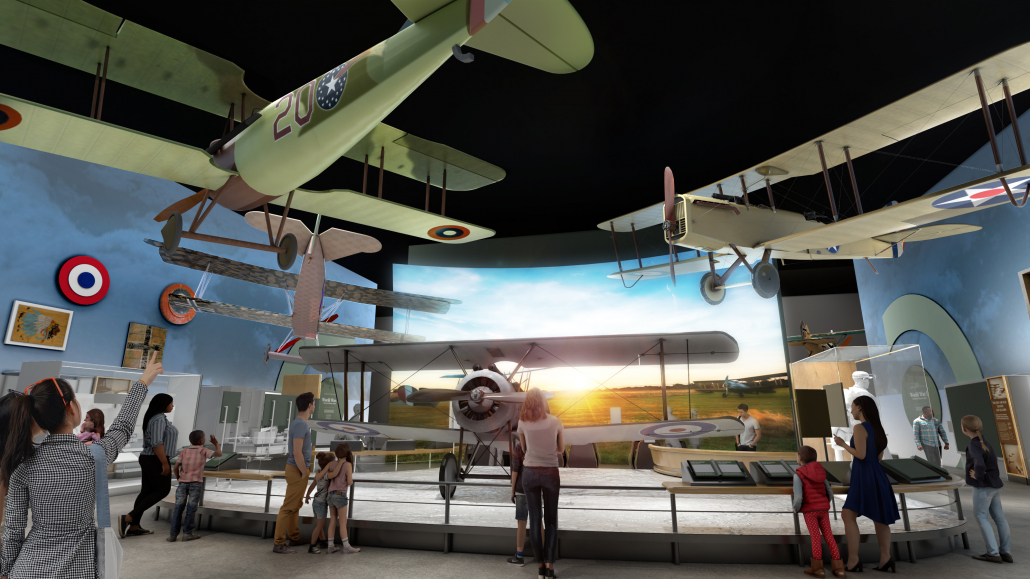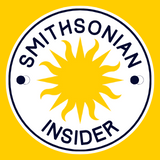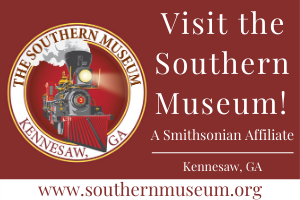Kudos to these Affiliates on their recent accomplishments! Do you have kudos to share? Please send potential entries to Aaron Glavas, GlavasC@si.edu.
FUNDING
High Desert Museum (Bend, OR) is one of 28 Oregon arts organizations receiving a $10,000 grant through the Oregon Arts Commission Arts Learning Program to strengthen arts education for K-12 students. The grant will support Kids Curate, a yearlong, bilingual education program that provides more than 50 hours of engaging and sequential arts learning experiences to 50 underserved students at Bear Creek Elementary School in Bend.
Michigan State University Museum (East Lansing, MI) is the benefactor of a $2 million gift from the Forest Akers Trust. The investment will be used to construct and equip two spaces within the museum— an Immersive Lab and an Exhibit Lab. These new labs will empower university students to take a hands-on approach to exhibition creation and visitor engagement with the museum’s extensive collection of more than 1 million objects.
University of Nebraska State Museum (Lincoln, NE) received a $2 million gift from the Hubbard Family Foundation to establish the inaugural Dr. Michael and Jane Voorhies Endowed Curator of Vertebrate Paleontology position. Dr. Voorhies is a professor emeritus in the University of Nebraska-Lincoln’s Department of Earth and Atmospheric Sciences and curator emeritus at the state museum. The gift honors the Voorhies’ work discovering, researching, and helping establish the Ashfall Fossil Beds State Historical Park. Ashley Poust, a paleontologist and a postdoctoral researcher at the San Diego Natural History Museum, has been named the inaugural curator.
The Fishers City Council approved a resolution granting Conner Prairie (Fishers, IN) $80,000 to serve the Fishers community, following a recommendation from the Fishers Nonprofit Committee.
Through its new Geosciences Open Science Ecosystem program, the National Science Foundation is funding 12 new projects to support sustainable and networked open science activities including Project Pythia and Pangeo: Building an Inclusive Geoscience Community Through Accessible, Reusable, and Reproducible Workflows. Led by the University at Albany, University Corporation for Atmospheric Research (Boulder, CO), and Code for Science and Society/2i2c, this project will advance the development and use of Pythia Cookbooks, which are web-based interactive computing platforms embedded in open, cloud-based computational environments for executing common geoscience workflows.
The National Endowment for the Humanities announced $41.3 million in grants to support vital humanities education, research, preservation, and public programs featuring these Affiliate projects:
- Anchorage Museum (Anchorage, AK) ($100,000) to conduct comprehensive energy and carbon audits and cover consultant costs associated with development of a climate smart sustainability plan for the museum.
- Japanese American National Museum (Los Angeles, CA) ($190,000) to develop two five-day workshops for 72 secondary school teachers on Japanese American history and community history through Los Angeles’s Little Tokyo neighborhood.
- Plimoth Patuxet Museums (Plymouth, MA) ($3,642) to purchase a digital, automatic monitoring system to record consecutive temperatures and relative humidity.
- Michigan State University Museum (East Lansing, MI)
- ($10,000) to purchase storage furniture to house portions of the Apparel, Textiles and Design teaching collection in museum-quality cabinetry.
- ($9,983) to improve the storage of 6,500 excavated and cataloged objects by replacing shelving and implementing radio frequency identification tagging technology for the digital tracking and retrieval of the collection.
- Dennos Museum Center (Traverse City, MI) ($10,000) to install 1,400 square feet of window tint film to reduce visible light levels in the museum’s promenade wing, a gallery space for light-sensitive objects such as photographs, works on paper, and organic materials.
- Mississippi Department of Archives and History (Jackson, MS) ($187,059) to create two, one-week Freedom Summer: 60 Years Later workshops for 72 K-12 educators on using a site-based approach to studying the civil rights movement in Mississippi.
- Center for Jewish History (New York, NY) ($350,000) to reconstruct the Center for Jewish History’s collection storage building to improve preservation of irreplaceable collections and reduce energy costs and carbon emissions.
- City Lore, Inc. (New York, NY) ($175,000) to develop a two-week Understanding Puerto Rican Migration and Community Building through the Arts and Humanities residential institute for 30 K-12 educators on the migration experience of New York City’s Puerto Rican communities expressed through the arts.
- Ohio History Connection (Columbus, OH) ($319,511) to digitize 100,000 pages of Ohio newspapers published prior to 1963, as part of the state’s sixth round of participation in the National Digital Newspaper Program. This phase would focus on three themes: community building, democracy, and transportation.
AWARDS & RECOGNITION
T
Barco presented their fourth annual Blooloop 50 Museum Influencer List for 2023.The list highlights 50 key individuals whose innovation and creativity have been integral to developing today’s museums including:
- Joël Tan, executive director, Wing Luke Museum (Seattle, WA)
- Carol Ghiorsi Hart, executive director, Greensboro History Museum (Greensboro, NC)
- William T. Harris, president & chief executive officer, Space Center Houston (Houston TX)
- Polly Olsen, director of diversity, equity, access, inclusion & decolonization, Burke Museum (Seattle, WA)
- Whitney Owens, chief learning officer, Cincinnati Museum Center (Cincinnati, OH)
- Micah Parzen, chief executive officer, Museum of Us (San Diego, CA)
The Southeast Museums Conference awarded the Greensboro History Museum (Greensboro, NC) two Gold Awards and one Silver Award for excellence in the use of technology. The competition encourages innovation, effective design, accessibility, creativity and pride of work, as well as recognition of institutional identity. The Gears of Democracy introductory video won Gold Awards for both its production and multi-screen installation in the NC Democracy: Eleven Elections exhibition. The stereoscopic video produced for the museum’s Gerrymander Madness received a Silver Award. NC Democracy: Eleven Elections has also been recognized with a 2023 Award of Excellence from the American Association of State & Local History. The exhibition explores choices and change across 11 state elections between 1776 and 2010, illustrating the twists and turns of who could participate, how voters cast their ballots, and what influenced decisions that continue to shape what democracy means today.
Kristan Uhlenbrock, director of The Institute for Science & Policy, a project of the Denver Museum of Nature & Science (Denver, CO), was named one of the recipients of the Eric and Wendy Schmidt Awards for Excellence in Science Communications. The award presented by the National Academies of Sciences, Engineering, and Medicine in partnership with Schmidt Futures recognized Uhlenbrock’s podcast series using interviews to explore the complex mix of climate change, science, politics, policy, economics, culture, and humanity to tackle one of the biggest problems facing the Western U.S.– water scarcity. In addition, the Institute earned a $100,000 grant from the National Conference of State Legislatures (NCSL) to explore creating a science policy fellowship program that would give state legislators direct access to doctoral-level scientific experts. The grant is part of the NCSL’s State Science Policy Fellowship Planning Grant Initiative and could help legislators make choices about issues like energy, air pollution, climate, water, public health, and technology.
The American Alliance of Museums announced Samuel W. Black, Director of the African American Program, Senator John Heinz History Center (Pittsburgh, PA) and Marise McDermott, President and CEO, Witte Museum (San Antonio, TX) have been named members of its Excellence in DEAI Steering Committee.
LEADERSHIP
Misha Galperin, Ph.D., president & chief executive officer, Weitzman National Museum of American Jewish History (Philadelphia, PA), announced she will be stepping down from her role at the museum. Misha will stay on and work with the Board to onboard a successor and effect a smooth transition.












